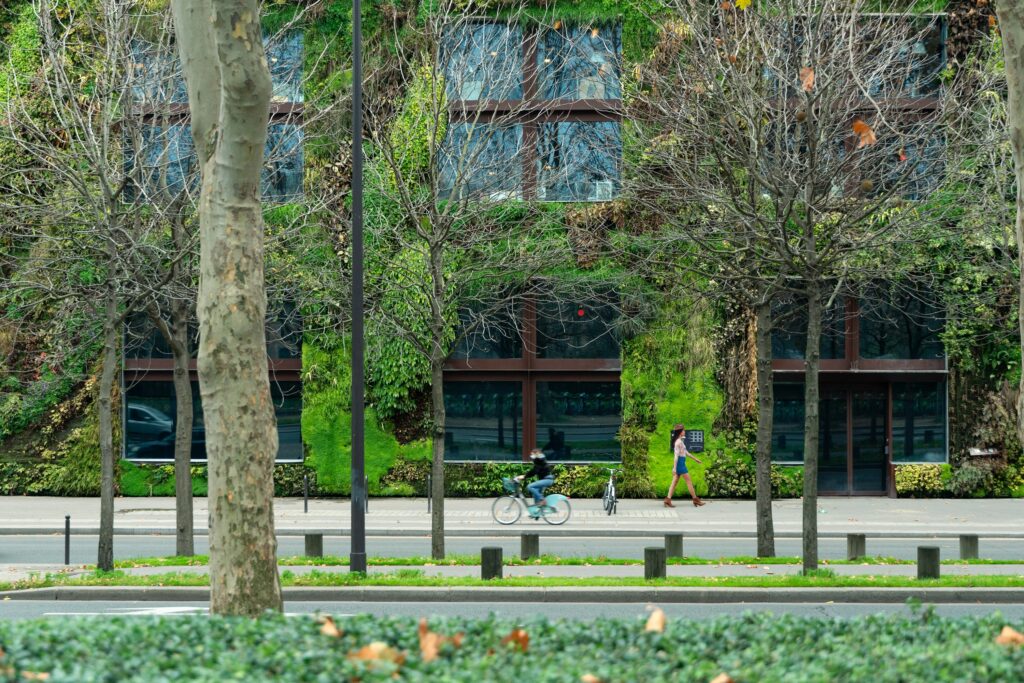With many countries experiencing an energy crunch and gas prices going through the roof, and as many cities around the world are still recovering from Covid restrictions and Covid-related angst, we must share some promising and even amazing ideas that we’ve seen in our travels to many cities in the world.
In fact, there’s been a movement towards the idea of sustainability that is fun, green and amazing, or as one architect calls it, “hedonistic sustainability”.
In other words, we need creative city-planners who embrace designs that prioritise sustainability while also making for city life that is fun and enjoyable by all and is community-building too.
Here then are three of our top picks for the most amazing green projects enjoyed by citizens in in three of the cities around the world … two of which we are, have been or will be writing about …
- Copenhagen: A clean power plant that serve also as a ski slope, a jogging destination, and a meeting place
The city of Copenhagen – the city where 41% of its citizens commute to work on bikes – has the cleanest waste-to-energy power plant in the world, at Copenhill, but most famously and enjoyably for the citizens of Copenhagen, there is a free ski-slope that is open all year round (the façade is also climbable – in fact the highest climbing wall in the world – while there are trails on its roof)!
The power plant has a 440,000 tonne waste capacity where the power output is enough to provide over 30,000 homes with electricity and 72,000 homes with heating. It is also a “hedonistic sustainability” project with an additional educational aspect: the chimney is designed so that it collects the CO2 into a ring which is then released into the sky. As its designer Bjarke Ingels tells us, 10 of those “smoke rings” represents one tonne of CO2 *.
Of course, many of Copenhagen’s decarbonization and sustainability-driven measures are “invisible” to its citizens, e.g. through the transition to wind power, the adoption of a district heating system, and so on. The city’s CO2 emissions has gone down by 70% since 1990 and is targeting to be carbon neutral by 2025.
(* For those interested to dig deeper, one tonne of CO2 in the EU’s “carbon credit market” is priced at around 90 Euros today; in fact, the ETS the benchmark ETS traded at 97.50 Euros in early February this year, its highest level ever since its launch in 2005).
- Paris: Buildings wrapped with magical plants
The musée du quai Branly in Paris was one of the first buildings “wrapped with plants” by Patrick Blanc in 2004. Le Mur Végétal, or Plant Wall, a dense sheet of vegetation that can grow against any surface, or even in midair. It works by doing away entirely with dirt, instead growing plants hydroponically in felt pockets attached to a rigid plastic backing.
Many more buildings in Paris have been wrapped by these walls since. And a 2021 study, “Living wall systems for improved thermal performance of existing buildings,” by researchers at the University of Plymouth found that adding a living wall to existing buildings can significantly reduce heat loss by 31.4%. As the plants grow, they trap carbon dioxide and produce oxygen, and soak up such pollutants as lead and cadmium. Green walls absorb noise; help reduce the heat island effect, keeping cities cooler; and provide a habitat or insects and spiders, which in turn feed birds and bats.
Milan has its own variation on this, with its Bosco Verticale – or vertical forest – designed by Stefano Boeri, where the green facades are arranged more
“horizontally” on the ground, in pots or planters, on each floor.
- Seoul: Sunken river and hanging gardens
Seoul’s Cheonggyecheon, a seven-mile-long stream that had been paved over and buried for years and “reclaimed” and regenerated, with pedestrian walkways, sculptures, and water features, had opened in 2005 as a “green” initiative and has very much brought life in the heart of Seoul.
[click on image for a map of Cheonggyecheon]
This was followed by a “green” overpass called Seoullo 7017, or Seoul Street, an elevated urban walkway similar to New York’s famed High Line, that opened in 2017 and is a mile-long stretch of highway overpass that had been destined for demolition and restored and repurposed with cafes, trampolines, and 250 kinds of plants and trees. (It is named for the year the overpass was built – 1970 – and the year the walkway opens.)
Hailed as a “hanging garden”, this new urban pedestrian walkway links the Namdaemun market, a ramshackle tourist hot spot that has been in decline for a decade, with a neglected neighborhood on the western side of the railroad tracks that run into Seoul Station, and is designed to not only restore the overpass, but become a catalyst for the revival and regeneration of neighboring region.
The project is part of a wider urban regeneration effort that has seen the creation of pedestrian-only streets and redesigned sidewalks to make the city more walker-friendly. The walk is also illuminated with LED lights that glow blue at night.
With beautiful landscaping, convenient amenities, and family-friendly atmosphere, and even a foot bath area, what is not to like?






